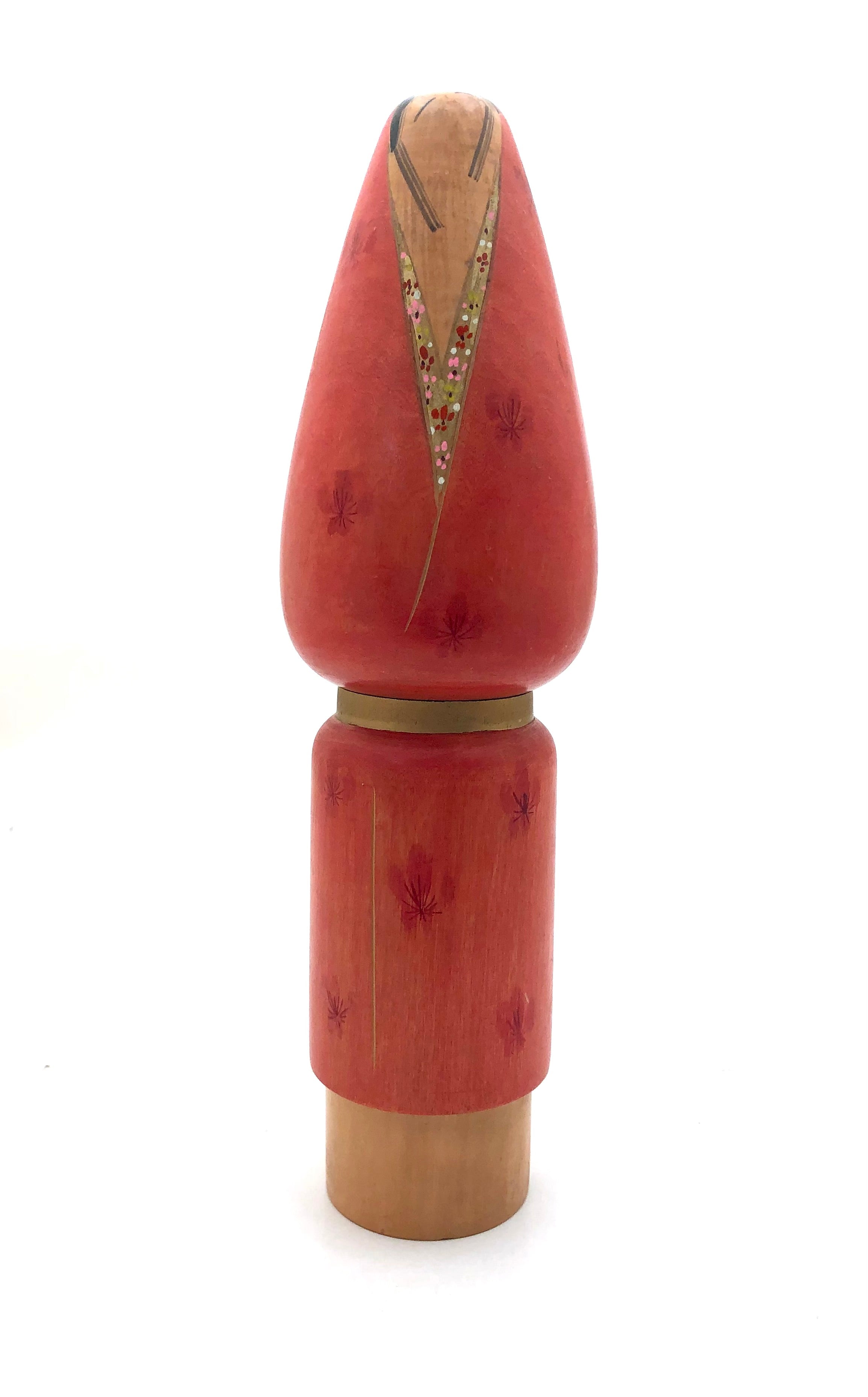
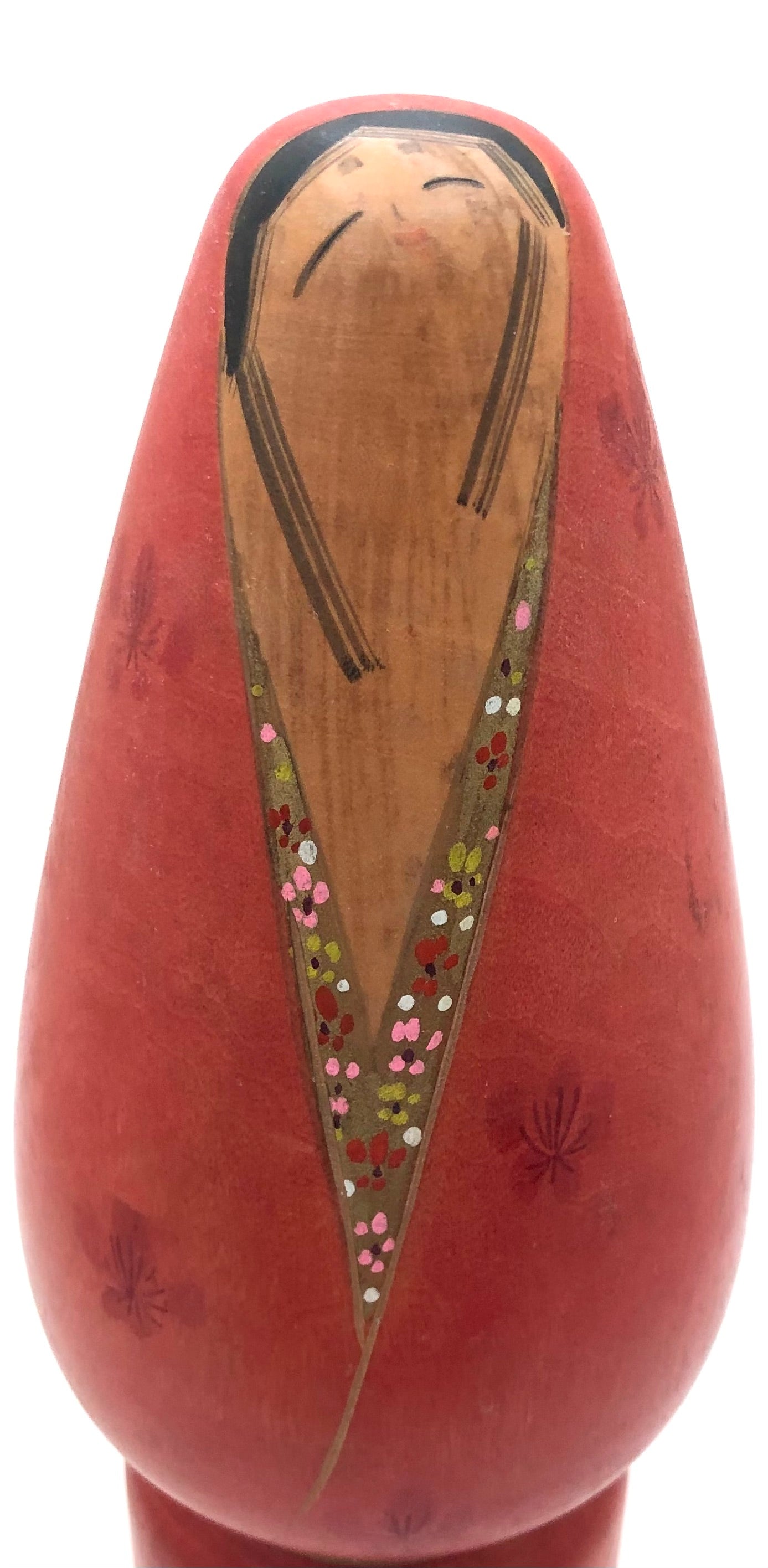
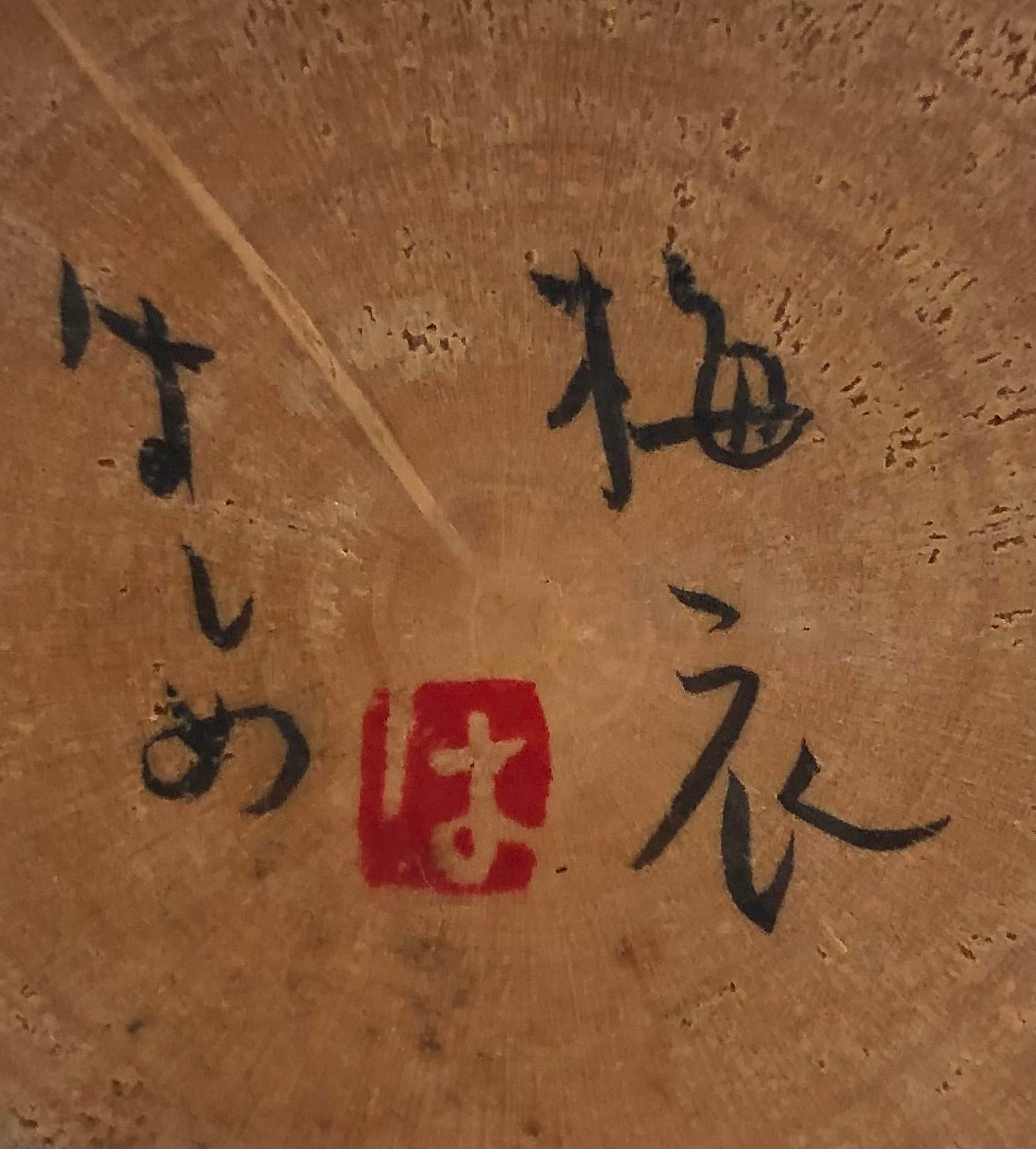
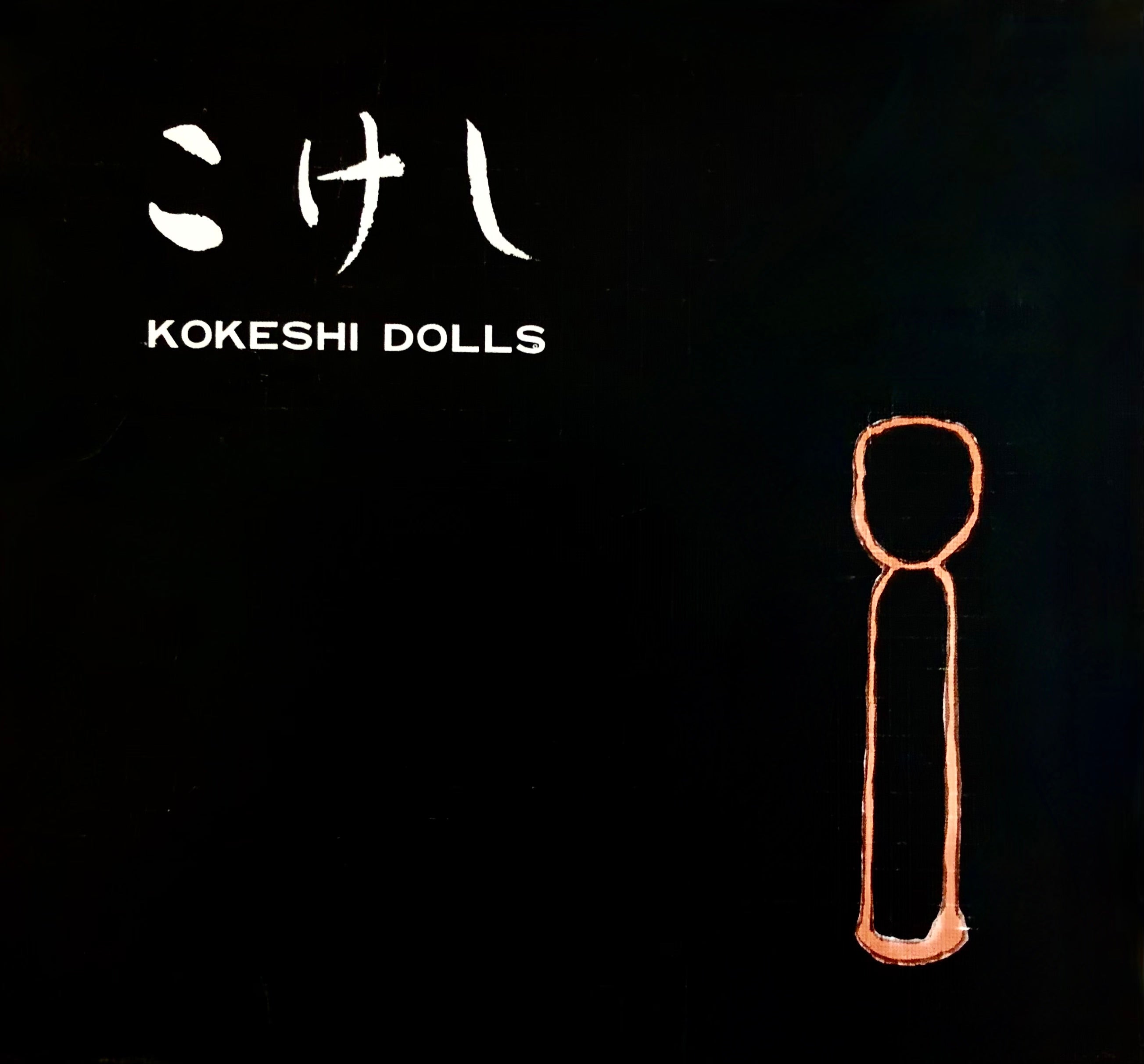

Vintage Japanese Sosaku Kokeshi entitled: “Ume Goromo | Plum Kimono” by Takahashi, Hashime
Dimensions: 14-3/8”h
Shown is an exceptional and Rare Kokeshi which illustrates the artist’s educational foundation in painting, (Sōtatsu-Kōetsu). This piece is formed on the lathe from one piece of Birch (Kabanoki) wood in which the natural wood is only shown on the head-neck and base of the doll. The unique formation of the head is what makes this piece rare, and to date has not been adopted by other carvers. The figure with an upturned face is detailed in black and grey sumi-e’ type rendering as if looking up to the trees dropping plum blossoms. The piece is beautifully ornamented with pink-colored plum blossoms with accented pistils and stamens and disbursed throughout the figure.
Takahashi-san completes the Kimono interpretation by adding a nagajuban (stiff undergarment collar), in which tiny colorful flowers bring emphasis to her head and neck, and are fully detailed. He indicates the Kimono closure with a simple line suggesting the draping of the garment and finished in a light liserian purple. She has an exaggerated, tight waistline that simply accents the Obi in gold pigment. The piece is signed and has the artist's impressed stamp on the bottom of the doll. It was purchased in his studio that was in Sendai City, (Northeast of Tokyo on Honshu island) Japan.
NOTE: This Kokeshi by Takahashi was published and cited as a Japanese competition winner for which a group of Sosaku Kokeshi that were introduced in the United States to the American public under the auspices of the Japan Society of New York, and hosted by JETRO (Japan External Trade Organization). The catalogue entitled: Kokeshi Dolls From Japan,(Printed by DOBI Printing Co., Ltd. Japan), citing 232 Kokeshi, with selected designer photography, for which the image of the piece was listed as #71 of the catalog with the artist/designer, name of the doll, (English and Japanese), and the size of the doll. A very rare historical documentation of the first Sosaku Kokeshi proudly recognized by the Japanese government.
Condition: Excellent vintage condition and commensurate with age. Seldom found carving, with no loss or fading of artwork/details. After the turning, carving, and painting, the doll is finished and sealed with a natural candle wax, (Rosoku no ro). A perfect doll for the collector of Japanese Sosaku Kokeshi.
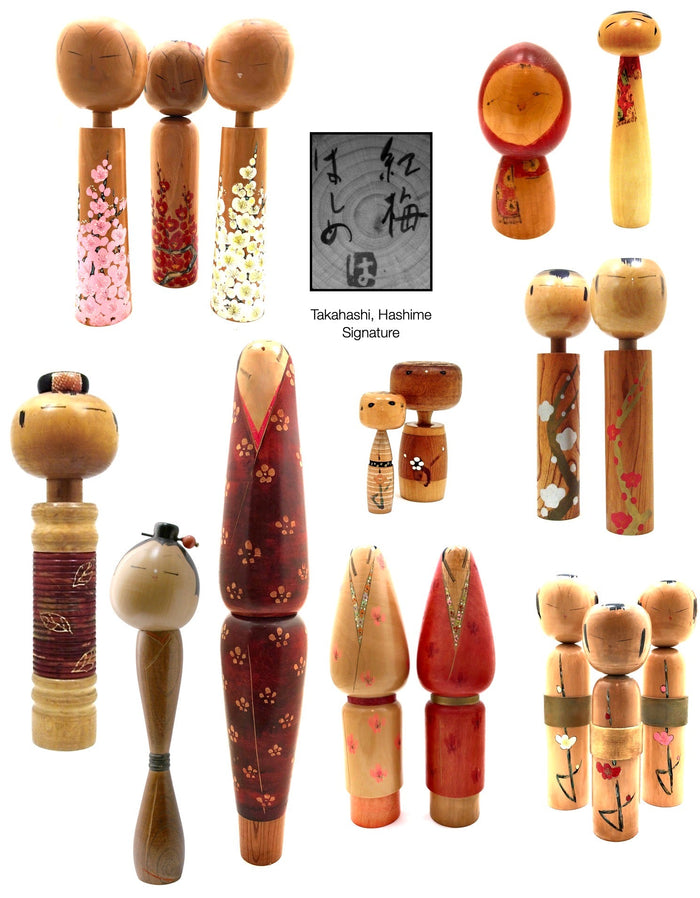
Artisan
Woodworker: Takahashi, Hashime
1918-2002
Biographical History:
Takahashi Hashime was originally a fine artist/painter. He is known for his colorful designs and the use of brush strokes. Takahashi-san is from Sendai, (where Traditional Kokeshi were born), in Miyagi Prefecture. His artistic background also includes time spent as a craftsman of Yuzen silk kimono dying which is why Kimono is a focus on all of his dolls. He is a multiple award winner in yearly Kokeshi competitions, receiving the Prime Minister’s Award, the highest honor bestowed on Sosaku Kokeshi artists. All of his work is easily recognized producing unique forms and details. Now deceased, his son, Akinori is carrying on the family’s tradition, but in limited production.
Collector's note – descriptive qualities, standard characteristics & ornamentation styles:
The most unusual quality of his dolls is that their heads are treated as a separate element which in many cases are a simple tapered element between the head and the body of the doll. The artist motif‘s range from realistic seasonal flowers such as abstract Plum flowers, (Ume), Cherry blossoms, (Sakura), and Japanese Iris, (Ayame), or celebrating zodiac figures representing one of twelve specific constellations of the zodiac, which over time took on diverse meanings. Takahashi-san has a beautiful pictorial approach to illustrating kimono in a very refined painterly way. He shows both painted and carved Kimono, Obi with exaggerated waists and supportive under and over garments such as scarves and sashes. His use of Rokuro Moyo is occasionally seen in carved and painted forms. Last but not least, are the detailing of faces, all having expressive eyes, small dot noses and wisps of hair. His use of Rokuro Moyo is occasionally seen in both carved and painted forms.
Explore & Learn More about Woodworker: Takahashi, Hashime